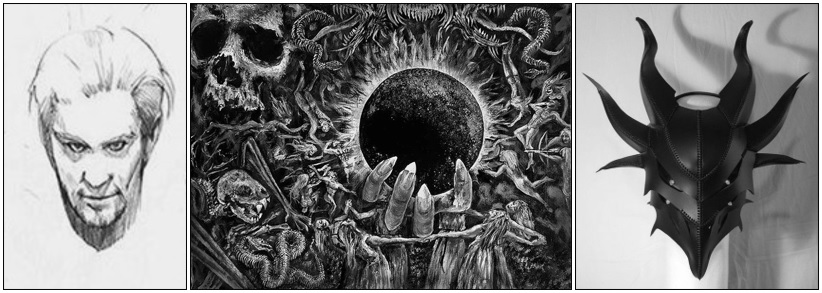Vigil is now available! About a year and a half ago, I played two intensive games which first seemed to me as if they shut down the whole endeavor, but then served as the real swerve into finishing the game.
I GM’d one of them with Pedro, featuring the Agony and set in Helsinki. Given the Hate he’s raised and the edginess of his hero, it is quite grim – way up there on the Nordic Noir scale. But one component and his emphasis on it moved play into highly sympathetic territory.
You see, Nordic Noir and its expansion throughout European TV and streaming has resulted in a lot of shows with such unsympathetic protagonists that they’re simply boring and horrid – pretty much just misery you-know-what.
So when we’re talking about a knife-wielding female Finnish vigilante called The Agony who exacts painful revenge on human traffickers, with echoes of 80s Punisher talk like “the courts let them go free” and a developing Motif of really disturbing imagery, I say to myself, well, you wrote it, now see if you like it.
… and then Pedro identifies one of her Motivations as “I want to care (3),” and plays it fully and well through several rolls in the first session. The difference was made. There was a lot to discover about Lia Kurtz and her descent – or perhaps ascent – into The Agony, and we played it through, including a surprisingly “rescue” orientation toward the Adversary.
System
- creation and play of the Adversary
- ways to move into new locations and new information
- non-standard combat events, e.g., inspiring a bunch of prisoners to attack their abuser
Play was very enjoyable but the system kicked my feet out from under me. What blocked or stopped me here was how Confidence is supposed to operate in play, as it seemed unavoidable but overwhelmed all the other kinds of confrontations.
At about the same time, I also played with Ram (author of the The Path of Journeys, the system Vigil evolved from), this time as player. My hero is Gary Lockwoode, just-retired museum curator and academic, in his 60s … now the Devil’s Mark, in Wichita, Kansas.
Here are the original character file, what it looks like after several sessions, and what it looked like going into the end of play.
Feel free to ask questions about how it got from the first version to the current one – anything specific about this which captures your eye.
Playing a hero (using the word loosely) in this game was both a relief, energizing in a purposeful way, and terrifying – the latter because danger to him is genuinely edge-of-seat play. He’s not me exactly, but the connection is very strong.
System features that came forward included:
- learning what GMing is like by not doing it
- a perfect contrast to the Adversary in the other game, as this Adversary was especially deserving of terrible punishment [that is, The Agony was a vengeful hero facing a sympathetic victim-ish Adversary; the Devil’s Mark is an activist hero facing an irredeemable and intentional evil]
- hero death
Hero death blocked or stopped me – it didn’t work well, or something about it felt like a sickening drop rather than an escalated event. Death needs to matter in Vigil; it can’t be a fake or pro forma threat. Specifically, I didn’t want to change anything that led to it; the question was, what is it as far as play is concerned?
Then something weird happened only two or three months ago. At the same time as feeling blocked or stopped, I also found myself easily writing actual instructional text, in a confident and purposeful way, as if the game were now in a finished state. I must have been resolving these issues at a non-verbal level, because now, in writing, I simply put in the rules revisions that work and amplify everything about Confidence confrontations and about hero death. I clicked “Save” in some sense of wonder that this was actually the game I’d hoped to make, beginning six years ago.

